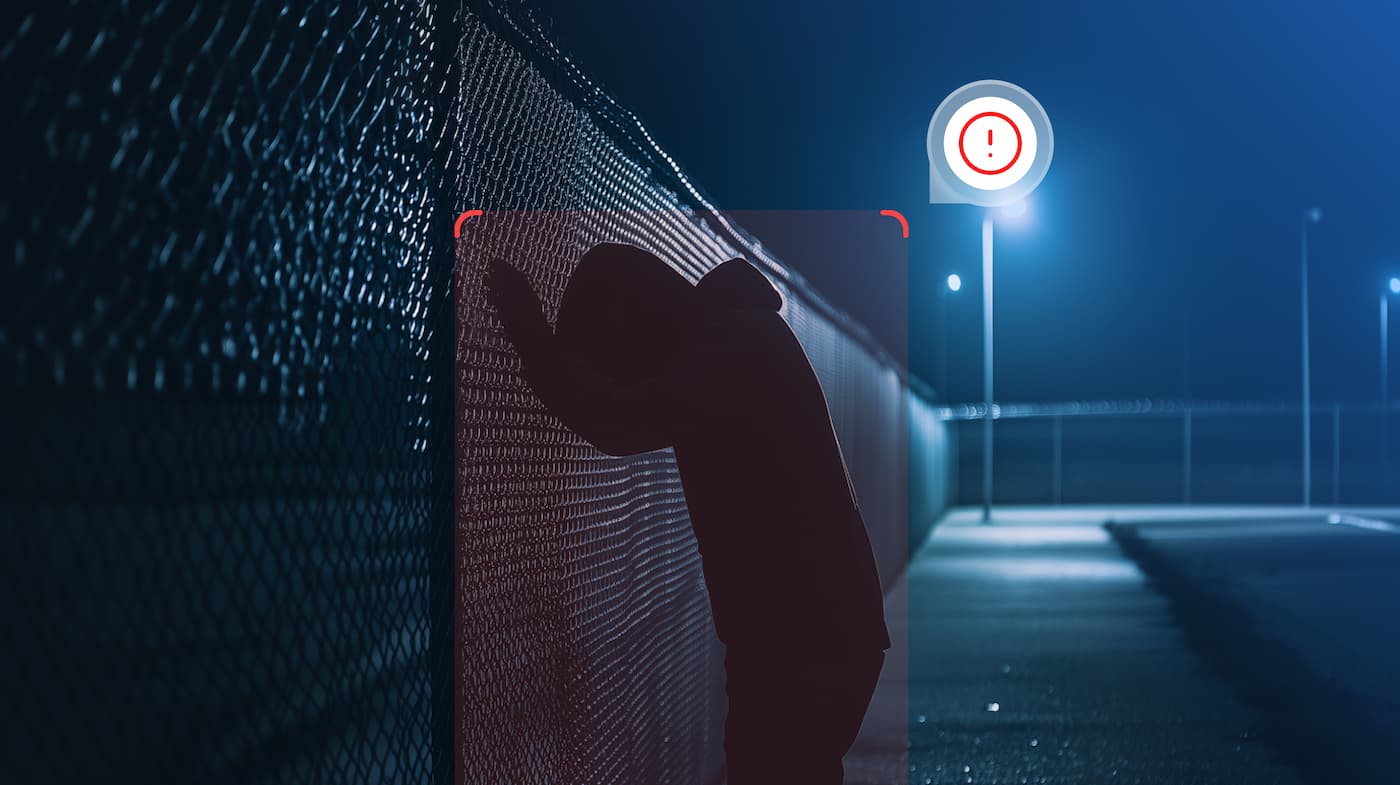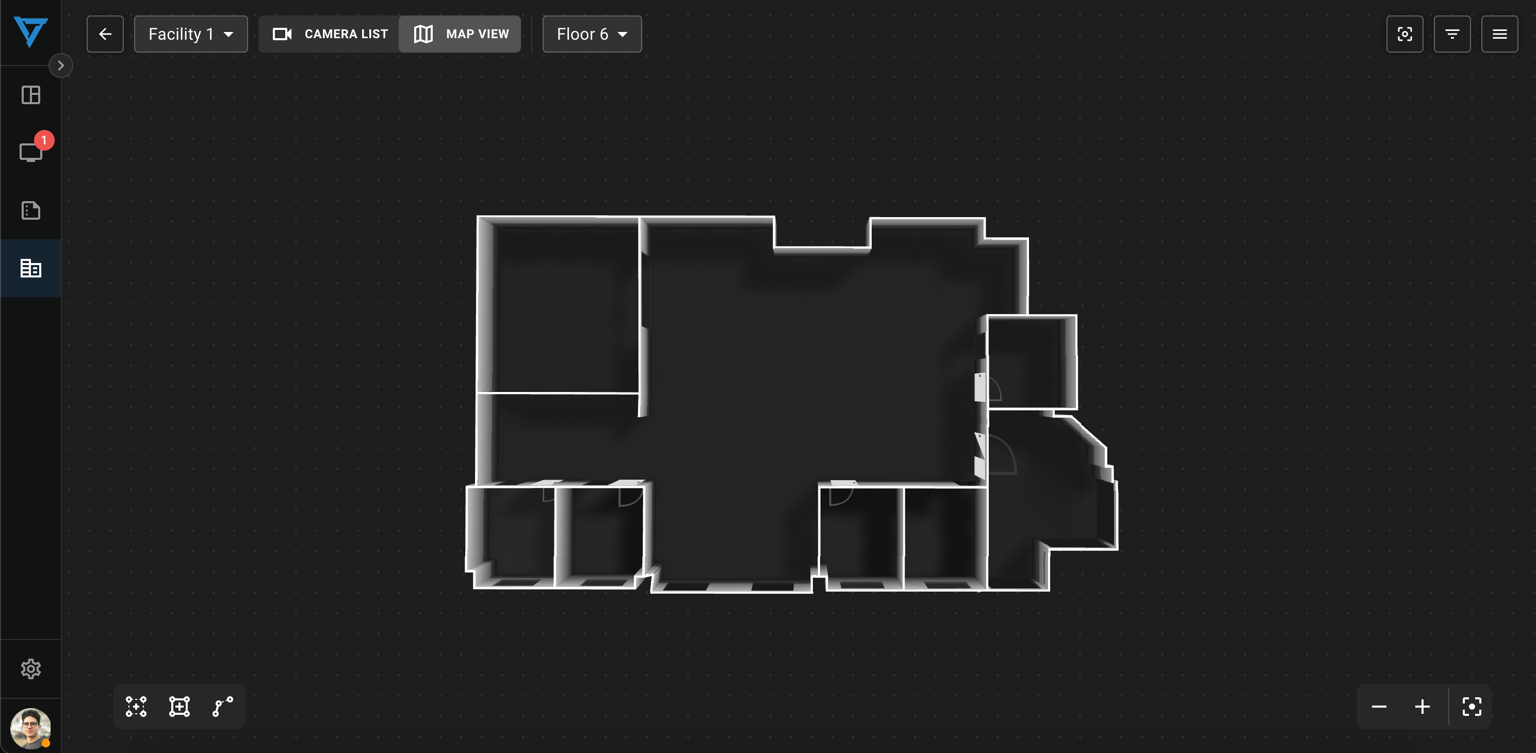In an era where school safety is paramount, the focus often centers on preventing major incidents like active shooter situations. However, a truly effective school security system must address a broader spectrum of threats, including unauthorized access, malicious behavior, theft, and various forms of crime.
This article explores why detecting these issues is crucial for maintaining a safe and secure learning environment, and how modern technology is revolutionizing school security, helping schools move beyond the traditional access control system.
Learn how real public schools have implemented VOLT AI.
The Evolving Landscape of School Security
Schools today face a complex array of security challenges that extend far beyond the threat of major violent incidents. While these remain a critical concern, day-to-day security issues can significantly impact the safety, well-being, and educational experience of students and staff. These challenges include:
- Unauthorized access to school grounds or restricted areas
- Theft of personal property or school equipment
- Bullying and fighting
- Vandalism and property damage
- Drug-related activities
- Cybercrime and digital threats
Addressing these diverse security concerns requires a multifaceted approach that goes beyond traditional security measures.
The Importance of Comprehensive Detection
1. Creating a Safe Learning Environment
The primary goal of any school security system, where access control is part of the equation, is to create an environment where students feel safe and can focus on learning. When students are worried about their personal safety or the security of their belongings, it can significantly detract from their educational experience.
The National Center on Safe Supportive Learning Environments, reports “School safety is linked to improved student and school outcomes. In particular, emotional and physical safety in school are related to academic performance.” By effectively detecting and deterring a wide range of security threats, schools can foster an atmosphere conducive to learning and personal growth.

Read the Complete Guide: The Future of School Security in the Modern Era
2. Protecting School Assets
Schools invest heavily in equipment and resources to support education. Theft or damage to these assets not only represents a financial loss but can also disrupt the learning process. Effective detection of theft and vandalism helps protect these valuable resources and ensures they remain available for educational purposes.
3. Preventing Escalation of Minor Incidents
Many serious security incidents begin as minor infractions. For example, unauthorized access to a restricted area might be a precursor to theft or more serious criminal activity. By detecting these early warning signs, schools can intervene before situations escalate into major security breaches.
4. Supporting Disciplinary Processes
Accurate detection and documentation of security incidents provide valuable evidence for disciplinary proceedings. This ensures fair and consistent application of school policies and helps maintain order within the school community.
5. Building Trust with Parents and the Community
When parents and community members see that a school is proactively addressing a wide range of security concerns, it builds trust and confidence in the institution. This can lead to increased support for the school and its programs. A school access control system that works well gives parents the peace of mind that their children are protected.
6. Optimizing Resource Allocation
By understanding the types and frequency of security incidents, schools can more effectively allocate their resources. This might involve adjusting staffing patterns, investing in specific security technologies, or implementing targeted prevention programs.

The Role of Advanced Technology in Comprehensive Detection
Modern school security systems, particularly those employing artificial intelligence (AI) and machine learning, are transforming how schools approach detection of security threats. These systems offer several key advantages over traditional access control systems:
1. 24/7 Monitoring
AI-powered surveillance systems can provide constant monitoring of school premises, including areas that may not be frequently staffed. This ensures that security threats are detected regardless of when or where they occur.
2. Behavior Analysis
Advanced AI algorithms can detect unusual or suspicious behaviors that may indicate a security threat. This can include everything from identifying potential fights to recognizing patterns of behavior associated with theft or unauthorized access.
3. Immediate Alert Systems
When a potential security threat is detected, these systems can immediately alert relevant staff members through various channels, including mobile devices and smartwatches. This allows for rapid response and intervention.
4. Integration with Traditional Access Control Systems
Modern security systems can integrate with an existing access control solution to detect and prevent unauthorized entry to school buildings or restricted areas.
5. Data Analytics for Proactive Security
By analyzing patterns of security incidents, schools can identify trends and implement proactive measures to prevent future occurrences.
Real-World Impact: Case Studies
The implementation of comprehensive detection systems has shown promising results in educational settings:
University of Illinois Chicago (UIC) Modernized Campus Security
UIC implemented an AI-powered video surveillance system across 142 critical security camera streams. This system provided:
- Advanced Weapons Detection
- Occupancy Monitoring
- Unusual Behavior Detection
- Camera Health Monitoring
- Extended Dwell Time Alerts
These features allowed UIC to address a wide range of security measures and concerns efficiently and effectively. For example, the unusual behavior detection feature helped prevent theft in high-risk areas like bike racks and scooter parking.
Overall the system provided enough efficacy in managing access control, preventing theft, and detecting anomalous behavior indicative of crimes that it allowed UIC to reduce their reliance on third party physical security companies, reducing overall costs significantly.
Prescott High School Secures School Grounds
Prescott High School's implementation of AI-powered surveillance yielded impressive results in detecting and preventing security incidents:
- Fight Detection: The system allowed staff to break up fights within seconds of their onset, significantly reducing the potential for injury.
- Crowd Detection: This feature helped identify unusual crowd formations that might indicate developing conflicts.
- Theft Prevention: Custom rules for detecting suspicious behavior in high-risk areas helped prevent theft and property damage.
Principal Adam Neely noted that this comprehensive approach allowed the school to be "out ahead of things that are happening" rather than constantly reacting to incidents after the fact.

Read the Case Study: How a Public High School Transformed School Security
Benefits Beyond Immediate Security
While the primary goal of comprehensive detection systems is to ensure immediate response to security threats, their benefits extend far beyond this:
1. Improved Overall School Climate
By effectively addressing a wide range of security concerns, these systems can contribute to a more positive school climate. When students feel safe and secure, they're more likely to engage fully in their education and extracurricular activities.
2. Data-Driven Security Policies
By tracking and analyzing security incidents, schools can identify patterns and implement targeted security policies. For example, if theft is frequently occurring in certain areas, the school might implement additional security measures in those locations.
3. Resource Optimization
Automated detection systems allow schools to deploy their security and administrative resources more efficiently. Staff can focus on their primary duties, knowing that the AI system is constantly monitoring for potential threats.
4. Legal and Ethical Considerations
Schools have a legal and ethical duty to ensure student safety. Comprehensive detection systems help institutions fulfill this obligation by providing a higher standard of security and potentially reducing liability in incident situations.
5. Preparation for Major Incidents
While day-to-day security issues are the most common concerns, the systems and protocols put in place for comprehensive detection can also play a crucial role in the early detection and response to major security incidents.
Implementing Comprehensive Detection Systems
While the benefits of these systems are clear, successful implementation requires careful planning:
- Needs Assessment: Schools should evaluate their specific security challenges to determine the most appropriate system.
- Staff Training: Proper training ensures that staff can effectively use the system and respond to alerts.
- Integration with Existing Protocols: The new system should complement and enhance existing security procedures.
- Privacy Considerations: Schools must balance the need for security with student privacy rights, choosing systems that prioritize privacy preservation.
- Community Engagement: Engaging with students, parents, and the community about new security measures can help build understanding and support.
- Ongoing Evaluation: Regular assessments of the system's effectiveness can guide improvements and ensure it continues to meet the school's needs.
VOLT AI: The Future of School Security
VOLT AI’s AI powered security camera software takes access control monitoring beyond basics. We start by working with your team to create a 3D mapping of your campus, and overlay that with details about your camera’s locations across the campus.

This allows your campus to be broken down into distinct zones, where you can apply specific rules on where you expect people to be or not, instantly detecting unauthorized access.
Learn more about VOLT’s facility mapping process.
Some examples of how this has been used in schools using VOLT technology include:
- Anomalous behavior detection: The system has helped in identifying individuals jumping a fence rather than entering through a main gate.
- Loitering: Administrators can set rules to be alerted when individuals are loitering in sensitive places. For instance, schools often do this around bike racks as it can help alert them to theft as it is occurring.
- Access windows: School security teams can set specific rules about times where access is authorized and not authorized, allowing them to be notified anytime someone enters a campus zone outside of acceptable hours. This has helped lead to theft detection and prevention in many cases.
- No access zones: Administrators can set certain zones of the campus as off-limits and be notified anytime an individual enters those areas.
The triggers built into VOLT’s AI models and the customized granularity of rules means administrators can build whatever security plan makes the most sense for their specific campus, and evolve that plan as they learn more.
Learn more about the behavior triggers available in VOLT AI and how to build customized rules.
Conclusion
Detecting unauthorized access, malicious behavior, theft, and crime is a critical component of modern school safety and security strategies. While high-profile incidents often dominate discussions of school safety, it's the day-to-day security concerns that most frequently impact students' sense of safety and their ability to focus on learning.
By implementing comprehensive detection systems, schools can create environments where students and staff feel secure, where valuable resources are protected, and where potential security threats are identified and addressed before they escalate.
These systems not only enhance immediate security but also contribute to a more positive overall school climate, optimize resource allocation, and provide valuable data for ongoing security improvements.
As we look to the future of education, it's clear that integrating smart, proactive security measures will be key to ensuring that schools remain safe havens for learning and growth. The investment in comprehensive detection systems is more than just an investment in technology – it's an investment in the safety, well-being, and future of our students and educational communities.
In an era where security challenges are constantly evolving, schools that embrace these innovative solutions will be best positioned to provide the safe, nurturing environments that students need to thrive.
By going beyond basic security measures and implementing comprehensive detection systems, schools can stay ahead of potential threats and focus on their primary mission: providing high-quality education in a safe and supportive environment.


